

You know the food is going to be WOW when Chef Michael Smith is at the party! From Chickpea Stuffed Crepes to Seared Scallops with Red Lentil Risotto, we were delighted to celebrate International Year of Pulses with the celebrity chef, foodies and farmers.
Pulses are the edible seeds of plants in the legume family, and include dried beans, dried peas, chickpeas and lentils. The United Nations has declared 2016 as International Year of Pulses (IYP). As Ambassador for Canada’s IYP, Smith praises pules for their nutrition, versatility, sustainability and affordability. And did we mention that they taste great?!


[Left: Indian chickpea stuffed crepe with curry chicken salad, golden raisins and cashews
Right: Pan seared scallops with red lentil risotto, smoked bacon and salsa verde]
Take the Pulse Pledge and commit to eating pulses at least once a week for 10 weeks. Here’s a fantastic recipe to get you started!
PULSE TACOS (courtesy of Chef Michael Smith, 2015)
These meatless tacos are stuffed with so much sunny southwestern flavour that no one will notice anything missing.
Makes 12 tacos, Serves 4 to 6
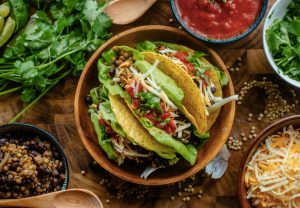
For the pulse filling
2 tablespoons (30 mL) of canola oil
2 onions, thinly sliced
6 garlic cloves, thinly sliced
1 heaping tablespoon (18 mL) of chili powder
1 teaspoon (5 mL) of ground cumin
1 cup (250 mL) of green lentils
A 19-ounce (540 mL) can of your favourite beans or chickpeas, rinsed and drained
2 cups (500 mL) of water
1/2 teaspoon (2 mL) of salt
1/2 teaspoon (2 mL) of your favourite hot sauce
For the taco toppings
A head of Bibb or iceberg lettuce
12 hard taco shells
A few handfuls of grated cheddar or taco blend cheese
Your favourite salsa
A large bunch of fresh cilantro
2 limes, cut into wedges
Make the lentil bean filling. Splash the canola oil into a large skillet or sauté pan over medium-high heat. Toss in the onions, garlic, chili powder, and cumin. Sauté until the vegetables soften and the spice flavours brighten, 3 or 4 minutes. Stir in the lentils, beans, water, and salt. Bring the works to a slow, steady simmer. Cover tightly and continue slowly cooking until the lentils are tender, 35 minutes or so. Stir in the hot sauce.
Assemble the tacos. Fit a full leaf of lettuce into a hard taco shell. This will hold the fillings in when the hard shell inevitably breaks. Fill each taco with a heaping spoonful of the lentil bean filling. Pack with cheese, salsa, and cilantro. Serve with the lime wedges and share!
Fascinating food fact: There are 22,000 pulse farmers in Canada, primarily in Saskatchewan, Ontario, Alberta and Manitoba. Our country is the world’s largest producer and exporter of peas and lentils.
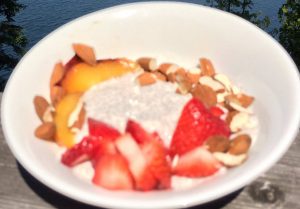 Get this all star easy to follow Chia Seed Pudding recipe we love for breakfast! Make it the night before and boost it with your favourite fruit and nuts. Recipe adapted from The Food Network, courtesy of Giada De Laurentiis. [1]
Get this all star easy to follow Chia Seed Pudding recipe we love for breakfast! Make it the night before and boost it with your favourite fruit and nuts. Recipe adapted from The Food Network, courtesy of Giada De Laurentiis. [1]
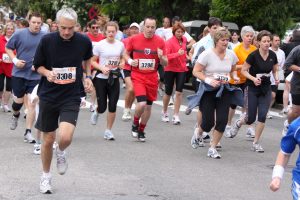

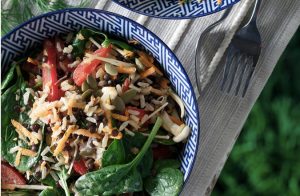
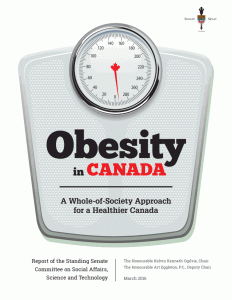





 ICYMI, Jamie Oliver was in Toronto to launch his new TV show on Food Network Canada and his new cookbook Everyday Super Food. We were there at the TV show prescreening and had a chance to listen to Jamie’s thoughts on his latest cookbook.
ICYMI, Jamie Oliver was in Toronto to launch his new TV show on Food Network Canada and his new cookbook Everyday Super Food. We were there at the TV show prescreening and had a chance to listen to Jamie’s thoughts on his latest cookbook.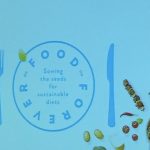
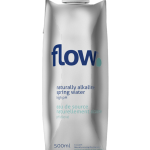 Alkaline water –naturally alkaline water with a high pH. A 500 mL serving contains: 0 calories, 0 g fat, 4 mg sodium 0 g carbohydrates, 0 g protein, 4% DV for calcium. (Top 10 Most Innovative Products for 2015.)
Alkaline water –naturally alkaline water with a high pH. A 500 mL serving contains: 0 calories, 0 g fat, 4 mg sodium 0 g carbohydrates, 0 g protein, 4% DV for calcium. (Top 10 Most Innovative Products for 2015.)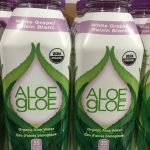 Aloe water – pulp free and sourced in North America. A 450 mL serving contains: 35 calories, o g fat, 0.015 mg sodium, 9 g carbohydrates, 8 g sugars, 0 g protein. (Made with aloe vera inner leaf powder, organic cane sugar, RebA stevia extract.)
Aloe water – pulp free and sourced in North America. A 450 mL serving contains: 35 calories, o g fat, 0.015 mg sodium, 9 g carbohydrates, 8 g sugars, 0 g protein. (Made with aloe vera inner leaf powder, organic cane sugar, RebA stevia extract.) Boxed water – why, because as the package says, “Boxed water is better”. The package tells their story – 78% of the box is composed from trees. No nutrition facts information is shown on the box.
Boxed water – why, because as the package says, “Boxed water is better”. The package tells their story – 78% of the box is composed from trees. No nutrition facts information is shown on the box. Protein2O – a protein enhanced water. A 500 mL serving contains: 70 calories, 0 g fat, 120 mg sodium, 70 mg potassium, 2 g carbohydrates, 0 g sugars, 15 g whey protein. (Made with sucralose.)
Protein2O – a protein enhanced water. A 500 mL serving contains: 70 calories, 0 g fat, 120 mg sodium, 70 mg potassium, 2 g carbohydrates, 0 g sugars, 15 g whey protein. (Made with sucralose.)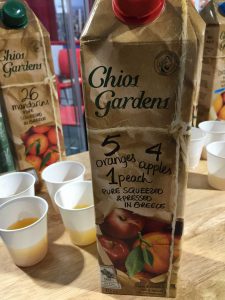
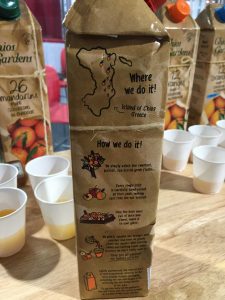
 3. Locally-grown quinoa. Who knew this gluten-free grain could be grown right here in in Ontario? Available in 2016.
3. Locally-grown quinoa. Who knew this gluten-free grain could be grown right here in in Ontario? Available in 2016.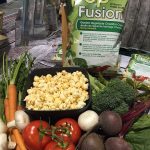 4. Pop Fusion Popcorn. Another local innovation. Popcorn is flavoured with a seasoning blend made from all of the veggies you see in the photo!
4. Pop Fusion Popcorn. Another local innovation. Popcorn is flavoured with a seasoning blend made from all of the veggies you see in the photo! Do you have a good understanding of today’s shopper? At this year’s annual BrandSpark conference, marketing and insight leaders shared these top 7 critical shopper factors.
Do you have a good understanding of today’s shopper? At this year’s annual BrandSpark conference, marketing and insight leaders shared these top 7 critical shopper factors.
 Dr. Ayra Sharma
Dr. Ayra Sharma Ted Kyle
Ted Kyle Sue Mah
Sue Mah We never miss attending SIAL Canada – it’s one of North America’s most important food tradeshows of the year. With 800 national and international exhibitors from 45 countries, this year’s SIAL event welcomed more than 13,000 buyers including Canada’s major retailers and purchasers from around the world who are seeking innovative and great tasting foods for their customers.
We never miss attending SIAL Canada – it’s one of North America’s most important food tradeshows of the year. With 800 national and international exhibitors from 45 countries, this year’s SIAL event welcomed more than 13,000 buyers including Canada’s major retailers and purchasers from around the world who are seeking innovative and great tasting foods for their customers.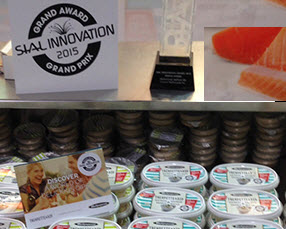 #1 – The winner of SIAL Innovation award went to Malimousse Seafood Dip with Greek Yogurt. The judges liked the dip’s quality, flavour and simple list of ingredients. Right on trend – Congratulations!
#1 – The winner of SIAL Innovation award went to Malimousse Seafood Dip with Greek Yogurt. The judges liked the dip’s quality, flavour and simple list of ingredients. Right on trend – Congratulations!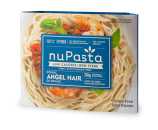 #2 – Nupasta – Konjac Angel Hair is an innovative pasta product that is high in fibre and has 1/10th the calories of regular pasta. Nupasta’s Stephen Cheung tells us that products made from the konjac plant may be new in Canada but are common in Japan. Nupasta is made with konjac root flour and soy flour and is priced like fresh pasta. NuPasta contains 95% water and 5% fibre, yet it tastes great, appears versatile and is ready in 1 minute. This Chinese/Canadian partnership also declares the product as gluten free and non-GMO. Innovation category: component – recipe.
#2 – Nupasta – Konjac Angel Hair is an innovative pasta product that is high in fibre and has 1/10th the calories of regular pasta. Nupasta’s Stephen Cheung tells us that products made from the konjac plant may be new in Canada but are common in Japan. Nupasta is made with konjac root flour and soy flour and is priced like fresh pasta. NuPasta contains 95% water and 5% fibre, yet it tastes great, appears versatile and is ready in 1 minute. This Chinese/Canadian partnership also declares the product as gluten free and non-GMO. Innovation category: component – recipe. What a way to start off the New Year! On January 22, 2014 we attended the Canadian Association of Foodservice Professionals’ (CAFP) “Molecular Gastronomy” event hosted by Humber College*. Chef John Placko demonstrated innovative cuisines where science and culinary arts intersect to create new techniques and dishes including sous vide cooking.
What a way to start off the New Year! On January 22, 2014 we attended the Canadian Association of Foodservice Professionals’ (CAFP) “Molecular Gastronomy” event hosted by Humber College*. Chef John Placko demonstrated innovative cuisines where science and culinary arts intersect to create new techniques and dishes including sous vide cooking. You too have probably eaten sous vide cooked foods in restaurants or while travelling on planes or trains and didn’t even know it! This innovative approach to cooking is used by food service professionals in hospitals, rail and airline companies, and even the military. Sous vide machines are also found in the homes of French cooks, but North American consumers are just starting to show interest as the first home sous-vide machines are expected to come to market. Watch for more innovation in this unique cooking trend.
You too have probably eaten sous vide cooked foods in restaurants or while travelling on planes or trains and didn’t even know it! This innovative approach to cooking is used by food service professionals in hospitals, rail and airline companies, and even the military. Sous vide machines are also found in the homes of French cooks, but North American consumers are just starting to show interest as the first home sous-vide machines are expected to come to market. Watch for more innovation in this unique cooking trend. Life expectancy of Canadians has hit an all-time high of 80.7 years, according to the most recent data released by Statistics Canada. However, men lag behind by almost 5 years nationwide with men living on average 78.5 years compared to 83.1 years for women. Why is there such a difference and what can be done to close the gender gap? One key reason may be that men are less likely to take care of their health compared to women. Although annual medical checkups and timely screenings can find early warning signs of trouble, many men do not take advantage of these treatments that may save their lives. It’s time to encourage conversations about men’s health. The “Movember” campaign has done just that by committing to “changing the face of men’s health.” Others are also taking a closer look at connecting with men, including the food and grocery industry. Research shows that long gone is the stereotype of a man as the basket-case in the grocery store and “man-style” shopping is gaining recognition. Studies suggest that men appear to do more than one-third of the family grocery shopping, a trend which is likely to continue.
Life expectancy of Canadians has hit an all-time high of 80.7 years, according to the most recent data released by Statistics Canada. However, men lag behind by almost 5 years nationwide with men living on average 78.5 years compared to 83.1 years for women. Why is there such a difference and what can be done to close the gender gap? One key reason may be that men are less likely to take care of their health compared to women. Although annual medical checkups and timely screenings can find early warning signs of trouble, many men do not take advantage of these treatments that may save their lives. It’s time to encourage conversations about men’s health. The “Movember” campaign has done just that by committing to “changing the face of men’s health.” Others are also taking a closer look at connecting with men, including the food and grocery industry. Research shows that long gone is the stereotype of a man as the basket-case in the grocery store and “man-style” shopping is gaining recognition. Studies suggest that men appear to do more than one-third of the family grocery shopping, a trend which is likely to continue.